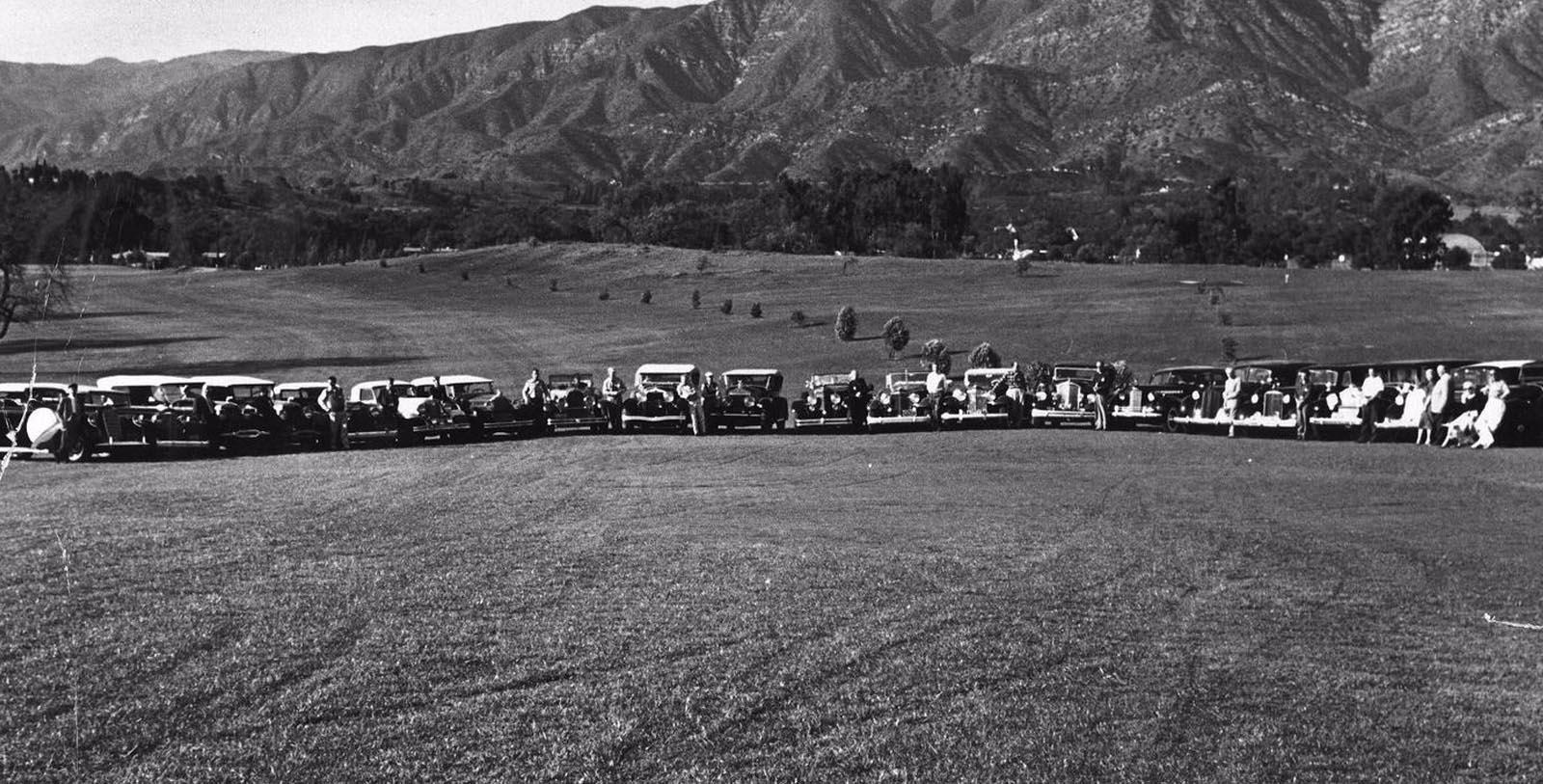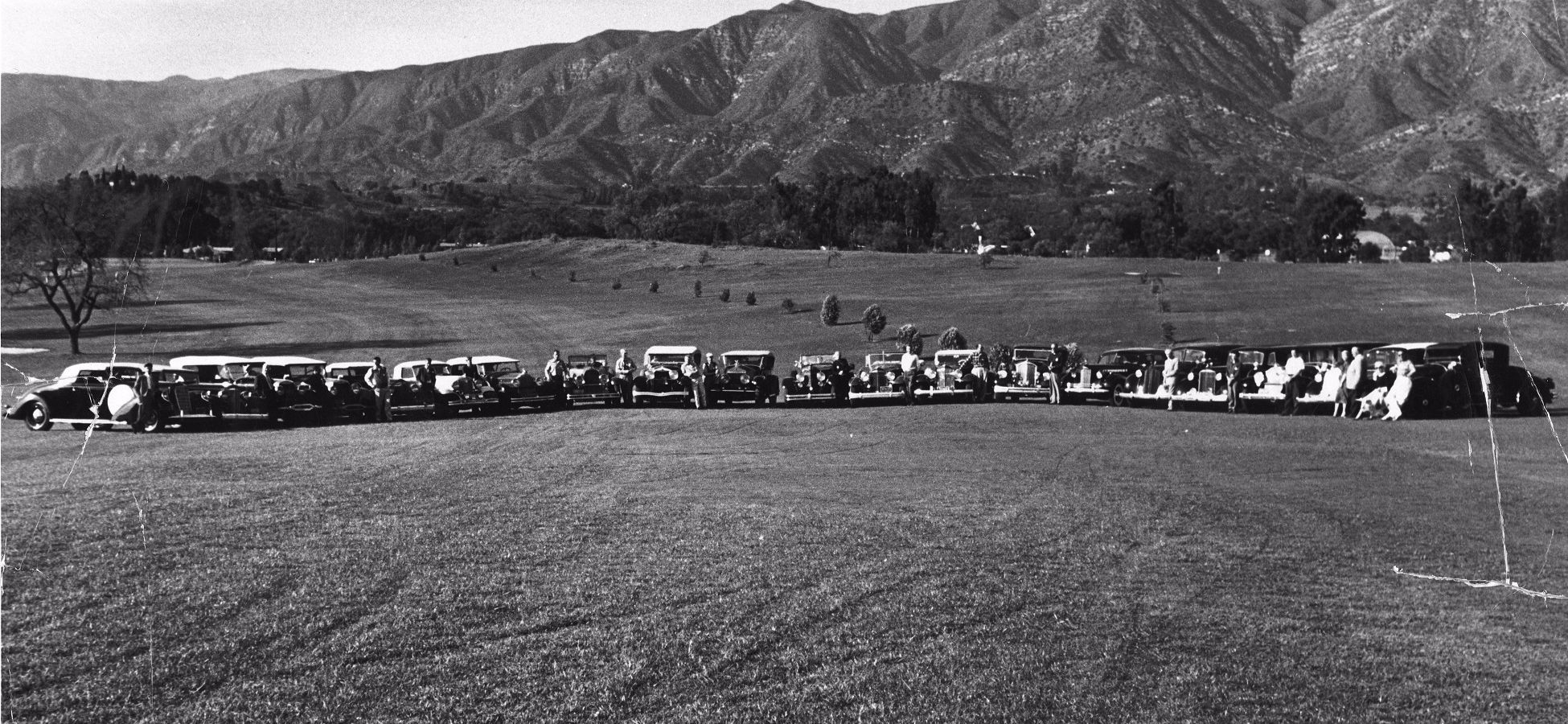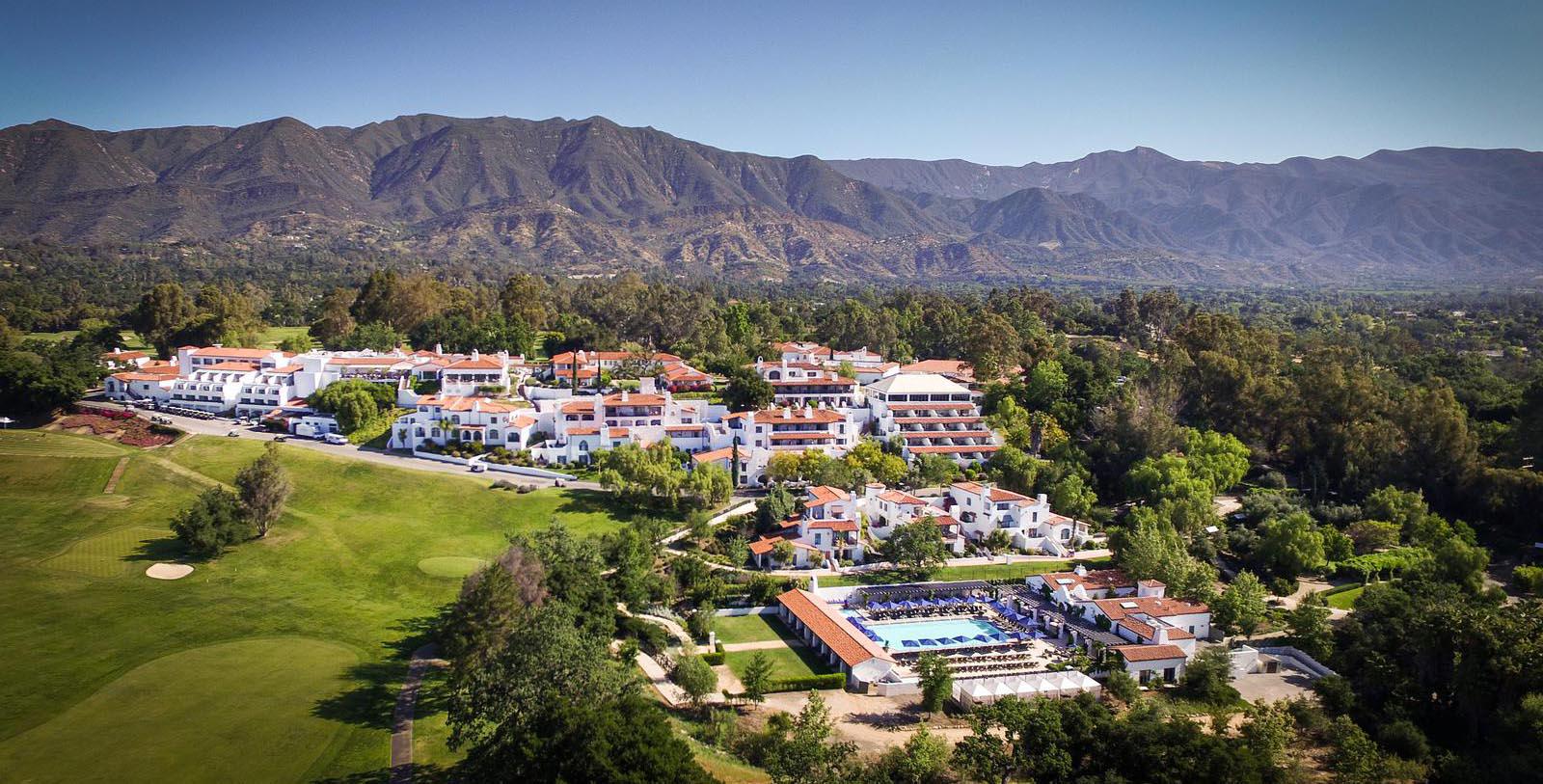Receive for Free - Discover & Explore eNewsletter monthly with advance notice of special offers, packages, and insider savings from 10% - 30% off Best Available Rates at selected hotels.
history
Discover the Ojai Valley Inn with its Spanish Colonial style and the property's gorgeous, cinematic vistas.
Ojai Valley Inn, a member of Historic Hotels of America since 1991, dates back to 1923.
VIEW TIMELINEHappy Birthday Ojai Valley Inn & Spa! Celebrating 90 years of Memorable Moments!
Ojai Valley Inn celebrated its 90th anniversary in 2013. Watch this amazing tribute for some interesting facts about the resort.
WATCH NOWA member of Historic Hotels of America since 1991, this amazing historic resort is among the most luxurious places to visit in southern California. It has long been the choice destination for dignitaries, intellectuals, and entertainers. Its story began in 1923, when glass industrialist Edward Drummond Libbey began constructing a brilliant country club and an 18-hole golf course at the site. Known as the “Ojai Valley Country Club,” the golf course was laid out by noted landscape architecture, George C. Thomas, Jr. Libbey supposedly gave Thomas free reign to design the course in whatever way he liked, instructing the engineer to: “Go ahead and build me the finest course that can be built…and use whatever land you wish. Give me the best. Money will be no object.” Upon its completion, many hailed the fairways as some of the most beautiful in the state. The Los Angeles Times even reported that the golf course’s geography, “was designed to look as if it had been there forever.” The country club was part of Libbey’s decades-long effort to improve the appearance of the Town of Ojai as a prominent resort community. Libbey himself had first arrived in the area at the start of the century, drawn to the region for its alleged health properties. He quickly fell in love with the surrounding area, and began investing heavily into its future development.
While George C. Thomas created the golf course, its attending clubhouse was designed by the noted architect Wallace Neff. Neff subsequently designed the building in the architectural style that was then popular in the area—Spanish Colonial Revival. This beautiful clubhouse operated alone for the next several years until 1934, when it was joined by a two-story inn. Created by Ausen Pierpont, it reflected the same design principles of the earlier clubhouse (although it came with an additional enclosed glass passageway). Despite the hardships the area faced due to the Great Depression, the new inn attracted all sorts of affluent clients. Its grand appeal even influenced director Frank Capra to film his classic adventure movie, Lost Horizon, on the grounds. Yet, the country club and its inn were forced to close during World War II, when the location was taken over by the War Department. Early on, it was used as a U.S. Army camp, with many barracks erected on the golf course. The Navy then assumed control over the Ojai Valley Country Club in 1944, which became overflow housing for the Port Hueneme Naval Base. The clubhouse and inn were specifically utilized as both an officers’ quarters for Navy officers and Seabee recruits. And legendary Hollywood stars Bing Crosby and Bob Hope hosted a fundraising ceremony for the Navy Relief Warfare Fund at the Ojai Valley Country Club.
But as the war drew to a close, the War Department finally allowed the facility to reopen as a private business. During the late 1940s, hotelier Don Burger and some fellow investors purchased the entire facility for $250,000. Renaming the destination as simply “Ojai Valley,” Burger began redeveloping the site as a luxurious resort. Then in 1947, he specifically added a new swimming pool, as well as the first “hotel” structure that featured 50 guestrooms. Burger also expanded the length of the golf course to measure a total of 6,800 feet, and constructed an imposing reservoir water hazard. Burger’s renovations worked wonders, as thousands of people from around the nation sought to book a reservation at the Ojai Valley. Some of the biggest names in the country showed up at one point or another, including Clarke Gable, Judy Garland, and future U.S. President Ronald Reagan. Golfing also became a cherished pastime at the resort, employing such renowned golfers like Jimmy Demaret and Doug Sanders. Director George Cukor even used the Ojai Valley to film large portions of his romantic comedy, Pat and Mike!
Eventually, Jim and Paula Crown purchased the resort in 1985. Over the next several years, they invested some $50 million into renovating the facility. The Crowns expanded the capacity of the Ojai Valley to offer a couple hundred guestrooms, as well as a new health center and a conference venue. The golf course also received a series of much needed renovations, which enabled the Ojai Valley Inn to host several circuits of the Senior PGA Tour. Some of those competitions even featured the likes of Arnold Palmer and Gary Player. In 1997, the Crowns officially adopted “Ojai Valley Inn” as the name of the resort. More recently, the Ojai Valley Inn saw the development of a 31,000-square-foot spa facility called “Benchmark Spa Ojai,” as well as a five-bedroom luxury residence called “Casa Elar.” The spa building itself was designed by architect David Bury, who used to the resort’s Spanish Colonial aesthetic to craft its façade. This fantastic historic resort still rates as one of the best holiday destinations in all of California. The location’s amazing heritage and brilliant architecture have made it a truly fabulous location to experience.
-
About the Location +
The history of Ojai harkens back centuries, with the native Chumash residing in the area thousands of years ago. In fact, the word “Ojai” is derived from the Chumash word “awha’y,” which means “moon.” The area itself was merely an outpost of their sprawling society that populated the California coastline from Morro Bay to Malibu Creek. The Chumash even established thriving villages on the charming Channel Islands. Eventually, in the late 18th century, Spanish Franciscan priests began creating missions throughout the region. Those isolated locations were all that existed of European society for decades, until Mexico achieved its independence from Spain in 1821. The new Mexican government then ordered all the mission complexes secularized, with the land divided among political allies. Those new estates were owned by a class of people soon known as “rancheros,” who wielded significant influence over the Mexican frontier. In 1837, a businessman from Santa Barbara named Fernando Tico received one such land grant, which constituted the lower and upper sections of the Ojai Valley. Called the “Rancho Ojai” grant, it specifically covered a land mass of nearly 18,000 acres! Tico subsequently operated a cattle ranch in the upper valley, while his family lived in an adobe down in the lower portion. But their time at the estate proved to be short-lived, as they wound up selling the site to new owners in 1853.
The Rancho Ojai then exchanged hands several times until Thomas A. Scott acquired it nearly ten years later. Scott was a Pennsylvania oil and railroad baron, who was attracted to the Ojai Valley due to rumors about its vast subterranean oil reserves. In 1866, Scott and his nephew, Thomas Bard, raised a steam-powered drilling rig on the northern face of Sulphur Mountain. Known as “Ojai No. 6,” Scott and Bard spent the next several months attempting to extract crude oil from the area. Their lives changed drastically when on May 29, 1867, the rig struck an oil pocket at a depth of 550 feet. The reservoir that Ojai No. 6 hit was immensely large, eventually producing 10 to 20 barrels a day. Around the same time, Scott’s neighbor, Josiah Stanford—the older brother of Leland Stanford, founder of Stanford University—created his own oil rig on the southside of Sulphur Mountain. It, too, found oil, and became just as productive as Scott’s Ojai No. 6. But this prosperity did not last long, for the country experienced a decline in oil prices toward the end of the decade. Making matters worse was the rise of other oil fields across the United States in places like Texas and New Mexico. As such, Scott closed Ojai No. 6, while Bard began selling surface rights all over the Rancho Ojai. (When the local oil economy finally recovered in the 1890s, Bard would return to Sulphur Mountain to construct many more new rigs.)
While the rapid oil boom temporarily cooled, the core of the City of Ojai started to come into existence. In 1874, a businessman from San Buenaventura named R.G. Surdam laid out a small street grid in the lower valley near the Rancho Ojai. He named the little community “Nordhoff” after the author Charles Nordhoff. Surdam had chosen Nordhoff as the town’s namesake, as the latter had written a popular book entitled, California for Health, Pleasure and Residence. As such, Surdam hoped to affiliate his new town with Nordhoff’s work, crafting its identity as a preeminent vacation and health retreat. (Even though Nordhoff never mentioned Ojai Valley in the first edition of his book, he included it in later versions upon learning of the town.) The marketing strategy worked brilliantly. At first, Surdam only talked about the climate and Nordhoff’s book—but in the 1880s, he also began to address the area’s mineral springs. Hundreds of individuals began flocking to the area, arriving predominately along the Ventura and Ojai Valley Railroad. By the end of the century, both the town of Nordhoff and the surrounding Ojai Valley had developed strong reputations as places of healing. People affected by respiratory diseases found the region particularly attractive, settling along the mountains that lined the valley’s borders.
In the early 1900s, Nordhoff was a vibrant resort community that was especially popular among wealthy families from the East Coast and Midwest. The upscale Foothills Hotel catered to many of those affluent people. Some of those visitors even made their stay permanent, constructing grand manors in the undeveloped land surrounding the town. Among the individuals who decided to live in Nordhoff year-round was Edward Drummond Libbey and his wife, Florence. First arriving in 1907 from Ohio, the Libbeys quickly fell in love with the valley. Edward Drummond Libbey proceeded to buy land near the Foothills Hotel two years later, creating a Craftsman-style home that was designed by Myron Hunt and Elmer Grey. A follower of the City Beautiful movement, Libbey started considering new ways to improve Nordhoff’s landscape. He specifically hired Frank Mead and Richard Requa to create a Spanish Colonial-themed town center. Among the most notable features involved a Mission-style arcade and a bell tower that mimicked the famous Havana Cathedral in Cuba. Once the final phase of the project concluded in 1917, the town’s name was officially changed to “Ojai.” To thank Libbey for all that he had done, the townspeople proposed holding a celebration in Civic Center Park—now known as Libbey Park—called “Libbey Day.” Always modest, Libbey instead implored them to name it “Ojai Day.” The Town of Ojai continued to celebrate “Libbey Day” every year until 1928. Nevertheless, the holiday was revived by a local schoolteacher named Craig Walker during the 1990s. The event has been a cherished local festival ever since.
-
About the Architecture +
When Wallace Neff first constructed the clubhouse of the Ojai Valley Country Club—the forerunner to the Ojai Valley Inn—he chose Spanish Colonial Revival-style architecture as the source for his inspiration. Also known as “Spanish Eclectic,” this architectural form is a representation of themes typically seen in early Spanish colonial settlements. Original Spanish colonial architecture borrowed its design principles from Moorish, Renaissance, and Byzantine forms, which made it incredibly decorative and ornate. The general layout of those structures called for a central courtyard, as well as thick stucco walls that could endure Latin America’s diverse climate. Among the most recognizable features within those colonial buildings involved heavy carved doors, spiraled columns, and gabled red-tile roofs. Architect Bertram Goodhue was the first to widely popularize Spanish Colonial architecture in the United States, spawning a movement to incorporate the style more broadly in American culture at the beginning of the 20th century. Goodhue received a platform for his designs at the Panama-California Exposition of 1915, in which Spanish Colonial architecture was exposed to a national audience for the first time. His push to preserve the form led to a revivalist movement that saw widespread use of Spanish Colonial architecture throughout the country, specifically in California and Florida. Spanish Colonial Revival-style architecture reached its zenith during its zenith during the early 1930s, although a few American businesspeople continued to embrace the form well into the late 20th century.
-
Famous Historic Guests +
Clark Gable, actor known for his roles in It Happened One Night, Mutiny on the Bounty, Gone with the Wind.
Judy Garland, actress and singer known for her roles in A Star is Born (1954), Meet Me in St. Louis, and Wizard of Oz.
Katherine Hepburn, actress known for her roles in The African Queen and Woman of the Year.
Spencer Tracy, actor known for such role sin Adam’s Rib, Woman of the Year, and Guess Who’s Coming to Dinner.
Bing Crosby, singer and actor known for his roles in Going My Way and The Bells of St. Mary’s.
Lana Turner, actress known for her roles in The Postman Always Rings Twice, Peyton Place, and The Bad and the Beautiful.
Hoagy Carmichael, songwriter known for such pieces as “Georgia on My Mind,” and “Heart and Soul.”
Irene Dunne, actress and singer known for her roles in such films like Cimarron, The Awful Truth, and Love Affair.
Loretta Young, actress known for her roles in The Farmer’s Daughter, Come to the Stable¸ and The Loretta Young Show.
Bob Hope, comedian and patron of the United Service Organization (USO).
Zsa Zsa Gabor, actress known for her roles in such films like Moulin Rouge¸ Lili, and We’re Not Married!
Walt Disney, legendary cartoonist and founder of the Walt Disney Company.
Frank Capra, filmmaker known for directing such movies as It Happened One Night, Mr. Smith Goes to Washington, and It’s a Wonderful Life.
Arnold Palmer, winner of 7 major golf championships that include the PGA Championship and the Masters Tournament.
Gary Player, winner of 9 major golf championships that include all four of the major tournaments.
Jimmy Demaret, winner of 3 major golf championship titles, specifically the Masters Tournament.
Ronald Reagan, 40th President of the United States (1981 – 1989)
-
Film, TV and Media Connections +
Lost Horizon (1937)
Pat and Mike (1952)
The Two Jakes (1990)




































